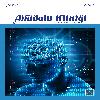Kornea nakli konusunda YouTube videoları ne kadar güvenilir bilgi sağlıyor?
To what extent are YouTube videos reliable for corneal transplantation information?
Cornea, information, internet, transplantation, video,
___
- Amante DJ, Hogan TP, Pagoto SL, English TM, Lapane KL. Access to care and use of the Internet to search for health information: results from the US National Health Interview Survey. J Med Internet Res. 2015;17(4):e106.
- Wikipedia [İnternet]. List of most popular websites. Erişim tarihi: 3 Nisan 2021, Erişim linki: https://en.wikipedia.org/wiki/List_of_most_visited_websites.
- Langford A. Loeb S. Perceived patient-provider communication quality and sociodemographic factors associated with watching health-related videos on YouTube: a crosssectional analysis. J Med Internet Res. 2019;21(5):13512.
- Koller U, Waldstein W, Schatz KD, Windhager R. YouTube provides irrelevant information for the diagnosis and treatment of hip arthritis. Int Orthop. 2016;40(10):1995-2002.
- Wong K, Doong J, Trang T, Joo S, Chien AL. YouTube Videos on Botulinum Toxin A for Wrinkles: A Useful Resource for Patient Education. Dermatol Surg. 2017;43(12):1466-73.
- Gokcen HB, Gumussuyu G. A quality analysis of disc herniation videos on YouTube. World Neurosurg. 2019:S1878-8750(19)30246-3.
- Picetti B, Fine M. Keratoplasty in children. Am J Ophthalmol 1966;61(4):782-9.
- Singh AG, Singh S, Singh PP. YouTube for information on rheumatoid arthritis--a wakeup call?. J Rheumatol. 2012;39(5):899-903.
- Silberg WM. Lundberg GD. Musacchio RA. Assessing, controlling, and assuring the quality of medical information on the Internet: caveat lector et viewordlet the reader and viewer beware. JAMA. 1997;277(15):1244-5.
- Weil AG, Bojanowski MW, Jamart J, Gustin T, Lévêque M. Evaluation of the quality of information on the Internet available to patients undergoing cervical spine surgery. World Neurosurg. 2014;82(1-2):e31-9.
- Ozsoy-Unubol T, Alanbay-Yagci E. YouTube as a source of information on fibromyalgia. Int J Rheum Dis. 2021;24(2):197-202.
- Ozdemir Zeydanli E, Alkan AA. Era of “Dr. YouTube”: Evaluation of YouTube Videos as a Valid Source for Patient Education on Keratoconus. Eye Contact Lens. 2021;47(9):526-32.
- Songur MS, Citirik M. Evaluation of the Usefulness of YouTube Videos on Retinal Detachment Surgery. Cureus. 2021;13(11):e19457.
- Kalayci M, Cetinkaya E, Suren E, Yigit K, Erol MK. Are YouTube Videos Useful in Informing Patients about Keratoplasty?. Semin Ophthalmol. 2021;36(7):469-74.
- Yildiz MB, Yildiz E, Balci S, Özçelik Köse A. Evaluation of the Quality, Reliability, and Educational Content of YouTube Videos as an Information Source for Soft Contact Lenses. Eye Contact Lens. 2021;47(11):617-21.
- Bae SS, Baxter S. YouTube videos in the English language as a patient education resource for cataract surgery. Int Ophthalmol. 2018;38(5):1941-5.
- Gabarron E, Fernandez-Luque L, Armayones M, Lau AY. Identifying Measures Used for Assessing Quality of YouTube Videos with Patient Health Information: A Review of Current Literature. Interact J Med Res. 2013;2(1):e6.
- Pamukçu M, İzci Duran T, Gut hastalığı hakkında bilgi kaynağı olarak YouTube: Kesitsel değerlendirme. Türkiye
- ISSN: 2149-5254
- Yayın Aralığı: Yılda 3 Sayı
- Başlangıç: 1933
- Yayıncı: Hayat Sağlık ve Sosyal Hizmetler Vakfı
Mahmut SUBAŞI, Abdulkadir EREN
Kornea nakli konusunda YouTube videoları ne kadar güvenilir bilgi sağlıyor?
Seray YÖRÜKOĞLU, İbrahim Ethem AY, Hamidu Hamisi GOBEKA, Mustafa DOĞAN
Böbrek iskemi ve reperfüzyon hasarında kreatin monohidrat desteğinin etkileri
Fatma HELVACIOĞLU, Tayfun GÖKTAŞ, Hande Ozge ALTUNKAYNAK-CAMCA, Tuğçe ŞİRİNOĞLU
Emre SAHİN, Merve AKDENİZ LEBLEBİCİER, İsmail SARACOGLU, Aysun ÖZLÜ
Melike BAYRAM, Emre BAYRAM, Şeyma Nur GERÇEKCİOĞLU, Tunahan DÖKEN
Tugba HALİLOGLU OZKAN, Derya DURSUN
Çocuk acil servisinde hızlı seri entübasyon deneyimlerimiz
Raziye Merve YARADILMIŞ, İlknur BODUR, Muhammed Mustafa GÜNEYLİOĞLU, Betül ÖZTÜRK, Aytaç GÖKTUĞ, Orkun AYDIN, Ali GÜNGÖR, Can Demir KARACAN, Nilden TUYGUN
Abdülhak Molla ve Tıbbîye’de çiçek aşısı uygulamasının başlangıcı
